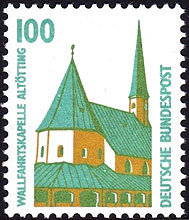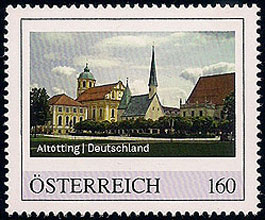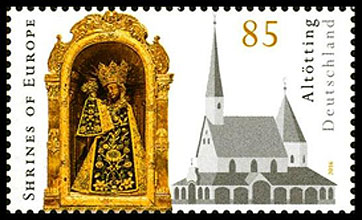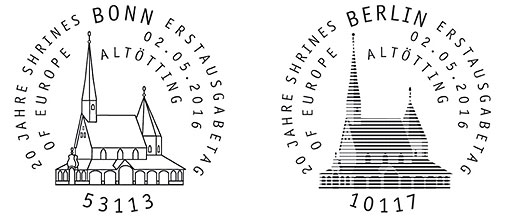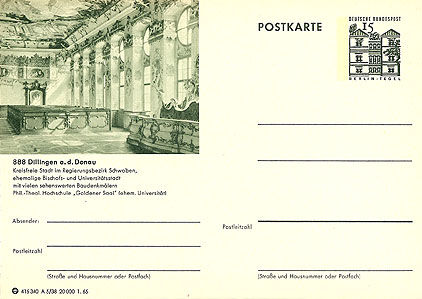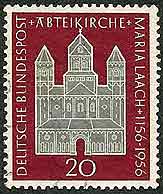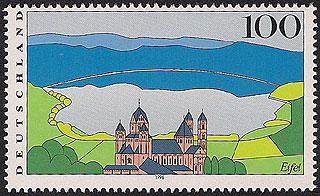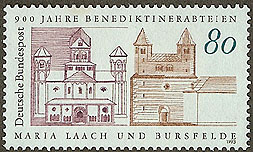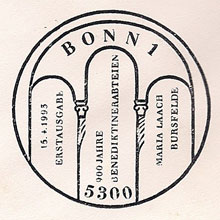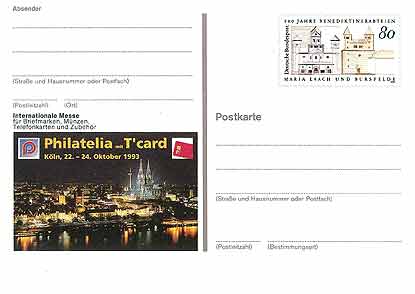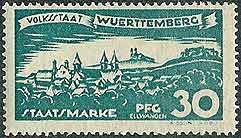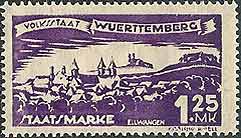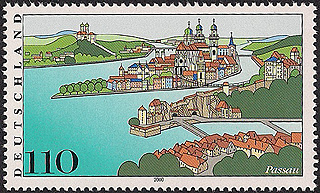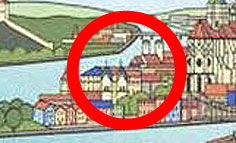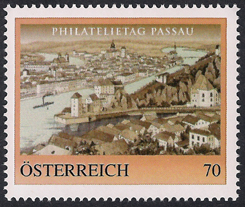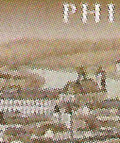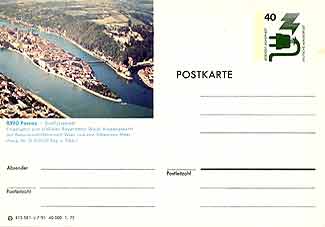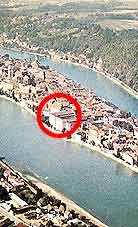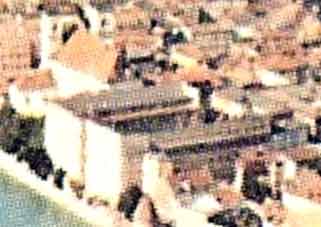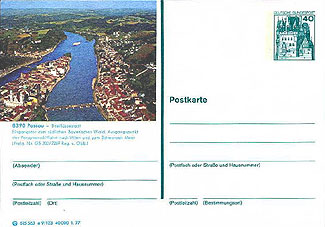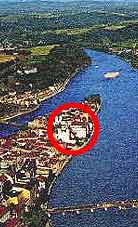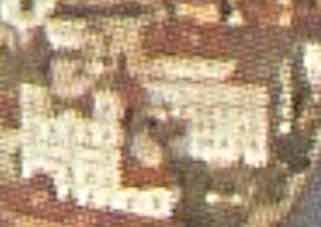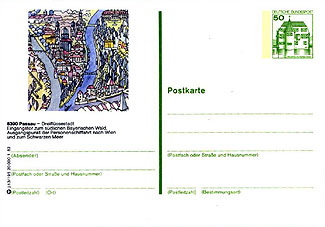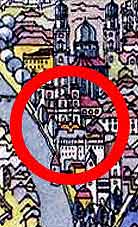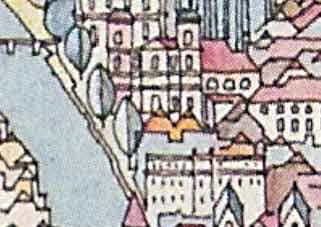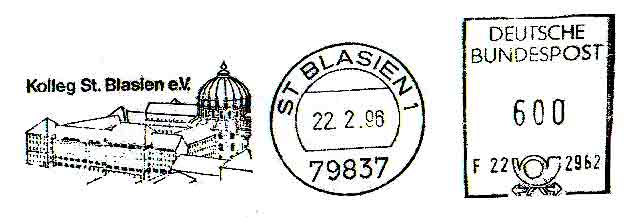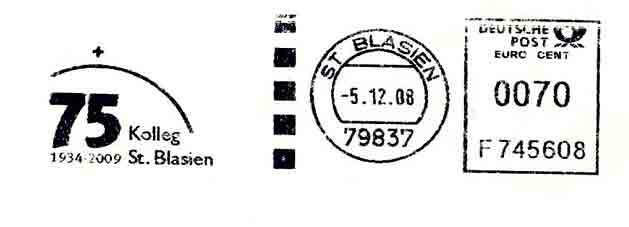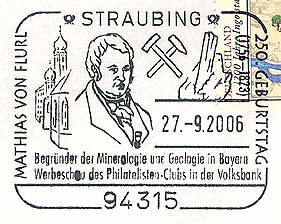The Jesuit
church and college at Ellwangen have now both passed into other hands,
but they may be seen on these stamps to the left of the famous shrine
of Our Lady of Loretto and below the word Volksstaat.
The
Jesuit College, Ingolstadt
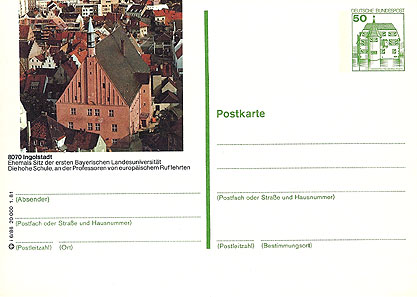
GERMANY, 1986 postal card featuring a University of Ingolstadt
building
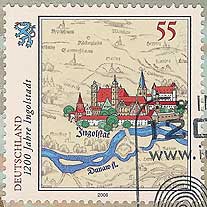

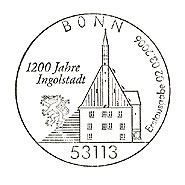
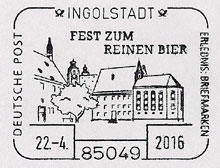
GERMANY, 2006, the 12th centenary of Ingolstadt,
Scott 2372 and its FDI cancel
GERMANY, 2016, a cancel for the "Feast for Pure Beer" the 5th centenary of a state order signed by the Bavarian royal duke William IV in Ingolstadt at the end of April, 1516, the oldest, still current food law in the world statiung that Bavarian beer can only contain hops, water and barley. The college and tower are at the left.
In 1549, with the approval of Paul
III, Peter Canisius, Salmeron, Claude Lejay,
and other Jesuits were appointed to professorships in theology and philosophy
at the University of Ingolstadt. In 1688
the teaching in the university's Faculty of Philosophy passed entirely
in the hands of the Jesuits. Until 1773 the Order profoundly influenced
the development and direction of the university, making it one of the
most important in Catholic Germany. They also began in 1549 a college
and a boarding school for boys, but left in 1552 when the college promised
them by Duke Wilhelm V was not realized. The building in which they taught
from 1549 to 1552 appears on the above postal card, FDI cancel, and if
one looks closely enough on the stamp itself. They returned in 1556 having
made new arrangements with Wilhelm's successor, Duke Albrecht and founded
a gymnasium (high school), and in 1576 Albrecht established the Jesuit
college. The Jesuit mission in Ingolstadt lasted until the Suppression
in 1773.
The
Munich School of Philosophy

GERMANY, 2011, meter stamp for the Jesuit School of Philosophy
in Munich
The Munich School of Philosophy, which has resided since
1971 in Munich, at Kaulbachstrasse, was originally founded by Father (later Cardinal) Augustin
Bea as the Berchmanskolleg in 1925, in the town of Pullach.
The school received accreditation by the Bavarian state government as
a school for instruction in the priesthood in 1925. The Vatican in 1932
raised the school to a Faculty of Philosophy in Canon Law, thereby enabling
it to confer the doctoral degree in philosophy upon its students, who
were at that time all Jesuits in formation, from the German-speaking Jesuit
provinces and from around the world. Since 1945 non-Jesuit students have
also been enrolled. The school moved to its present location in the center
of Munich in 1971, so as to be able to offer its courses and programs
to all students interested in philosophy. Since then, the name Berchmanskolleg
is no longer used for the school, but it continues to be the name of the
nearby Jesuit residence, where most of the Jesuit professors and student
live. At present approximately 600 students of philosophy are enrolled
at the school, the majority of them not members of the Jesuit Order, and
now including women and international students.
The
Church of St. Michael and the Jesuit College, Passau
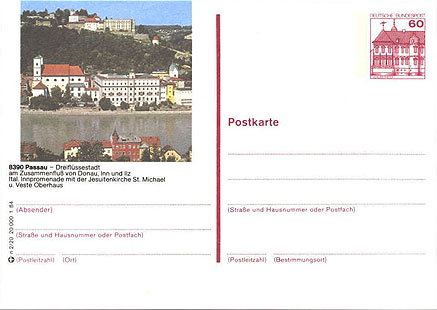
GERMANY, 1984, postal card featuring the twin towers and red roof
of the church and the college (the white building to its right);
three smaller postal card images are shown below
Passau in Bavaria is a town where three rivers meet: the
Ilz, the Danube and the Inn. Just west of their confluence on the northern
shore of the Inn River is the former Jesuit College of Passau, now the
Gymnasium Leopoldinum, and the former Jesuit Church of St. Michael.
Prince Bishop Leopold V, Archduke of Further Austria, brought
the Jesuits to Passau in 1611, where they established a collegium, designed
by the Alsacian Jesuit priest Johannes Isfording from Molsheim. It was
both a high school and the diocesan seminary. The Jesuits, in fact, controlled
the education of the diocesan clergy of Passau until 1766, just before
the Suppression. The library of the college has since then become the
Staatliche Bibliothek Passau (Passau State Library), home to an extraordinary
collection of 360,000 books, including more than five hundred incunabula
and 320 manuscripts, a number of them dating to the thirteenth century,
and exquisitely illuminated.
After the first church, built in 1612, fell victim to the
city fire of 1662, the two-towered Church of St. Michael was built between
1665-1678 according to the designs of Italian architect Pietro Francesco
Carlone, who also designed the Church of St. Ignatius in Linz. A chapel
dedicated to St. Francis Xavier is attached to the west front. The church
was decorated in Baroque style by the Italian stucco artist, Giovanni
Battista Carlone, clearly influenced by the work in Rome of Gianlorenzo
Bernini. Thus the church became the pioneer of high Baroque decoration
north of the Alps. The Jesuits deliberately imported these forms of Italian
Baroque, hoping to confirm and deepen the Catholic faith of the city.
The church and the college can be discerned on a stamp and three other
postal cards below (if you look closely enough).
